Best Time For Safari in Kenya - Month by Month Guide, Costs & More.
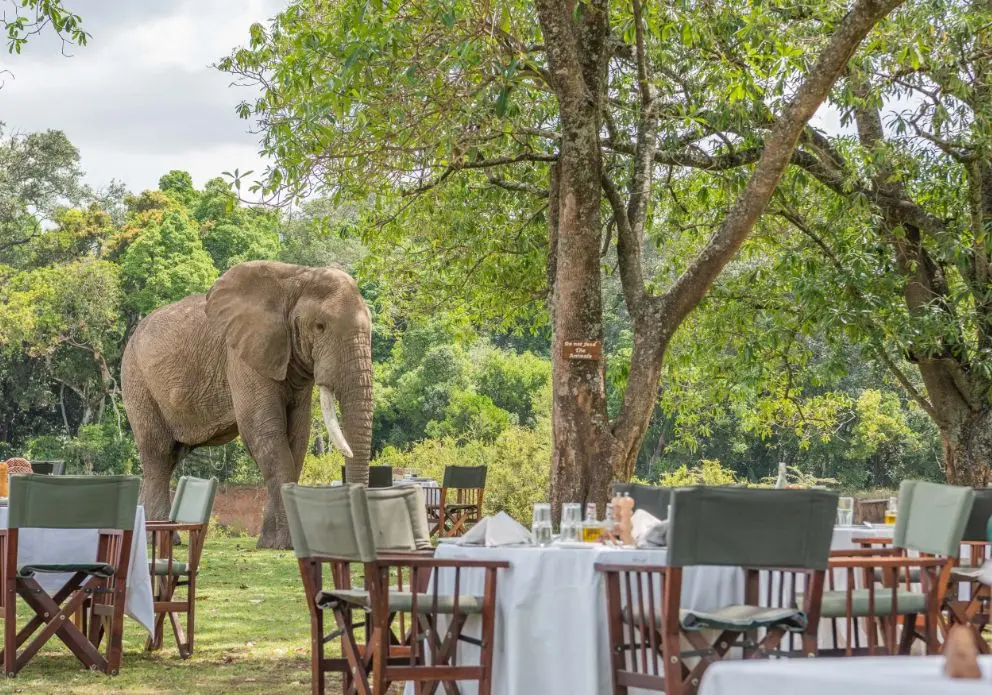
Kenya is an incredibly beautiful country, offering tourists the chance to witness some of Africa’s most iconic wildlife against stunning landscapes.
But when is the best time to visit Kenya for a safari?
While Kenya’s wildlife is present year-round, certain seasons and weather patterns offer unique opportunities for wildlife viewing, migration spectacles, and favourable weather conditions.
In this guide, we’ll explore the different seasons in Kenya, key highlights, and the best national parks for you to experience the wild lands of Africa.
Book Your Kenyan Holiday With Us
To visit Kenya and enjoy her natural wonders we invite you to contact us via phone or WhatsApp at +254-704-532-105. You can also connect with us via email at safarioffers@kenyaluxurysafari.co.uk or safarioffers@ajkenyasafaris.com.
Our senior consultant, James Gatheru, is conversant with month-by-month wilderness experiences to help you decide on the most ideal time to visit Kenya.
When to Visit Kenya - Photos
Understanding Kenya's Safari Seasons
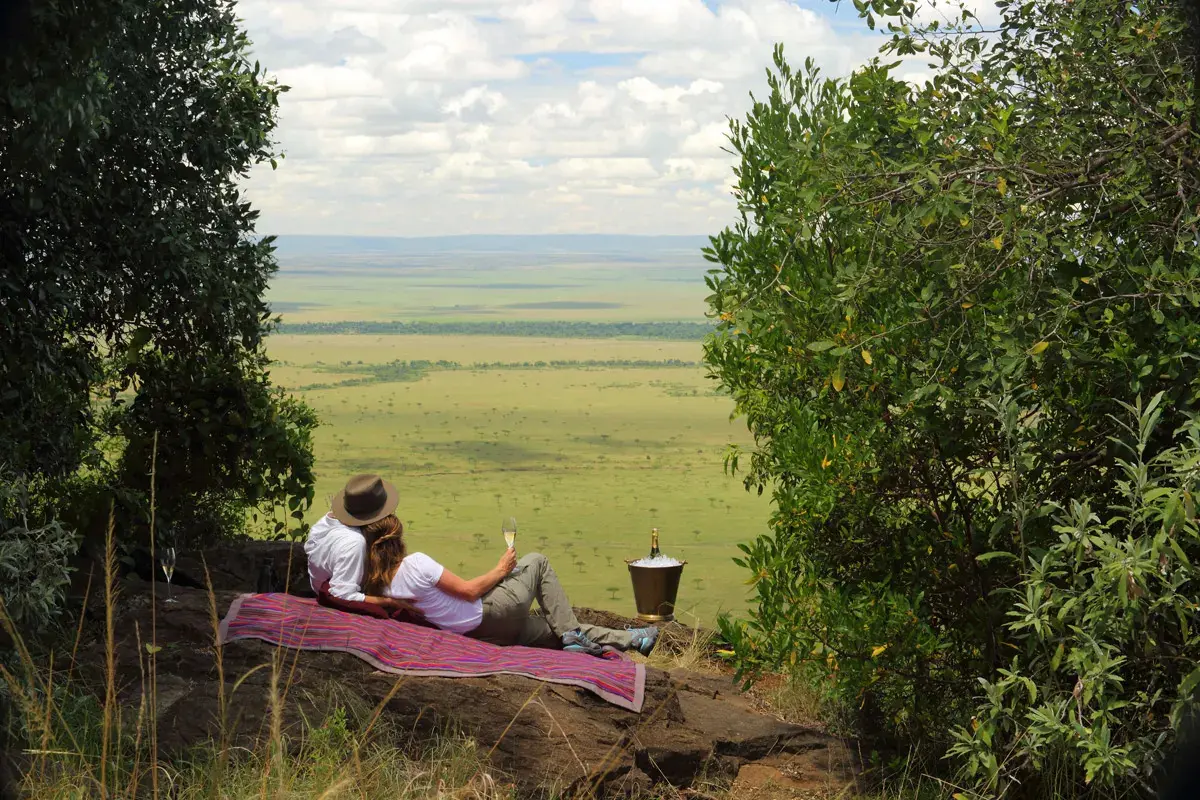
Kenya’s wildlife spectacle is a year-round marvel, but it’s the country’s distinctive seasons that set the stage for its most awe-inspiring displays.
The dry season (January-February and June-October) and the rainy season (March-May and Nov-Dec) offer unique experiences and opportunities for safari enthusiasts.
Dry Season (January-February, June-October)
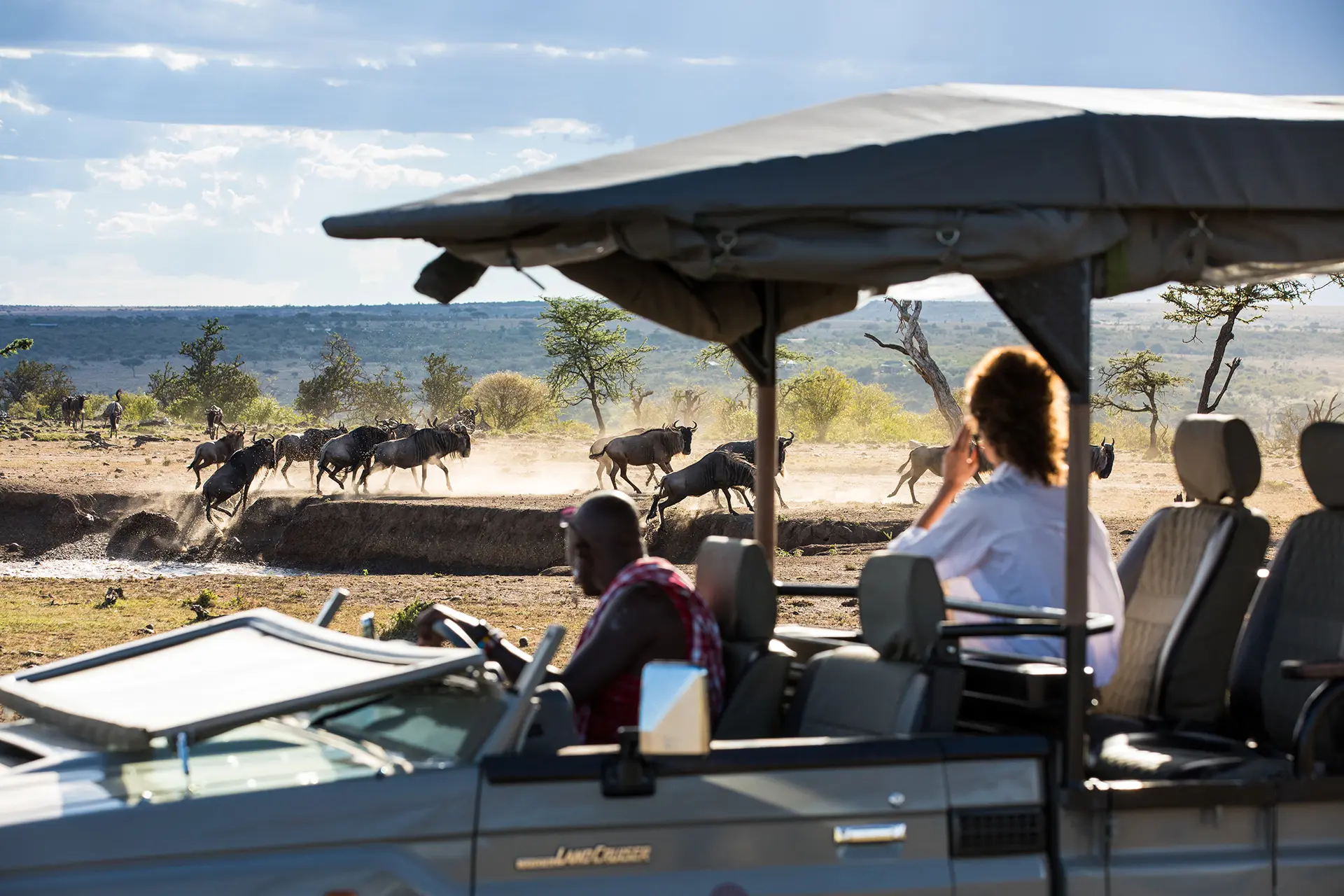
The dry season in Kenya typically runs from June to October, coinciding with the winter months in the Southern Hemisphere and UK school holidays in the summer season. Kenya’s long dry season is considered the peak tourist season for good reason.
With little to no rain, vegetation is sparse and the park is generally dry which transforms the rolling African plains into a wildlife paradise. Wild animals, driven by thirst, converge around permanent watering holes, providing a front-row seat to nature’s drama.
The long dry season also offers comfortable temperatures for game drives and other outdoor activities while the clear skies are perfect for photography sessions.
Some migratory bird species flock to the parks in November but we’ll cover that in detail later. Similarly, millions of wildebeest, zebras, and other herbivores start arriving at the Masai Mara National Reserve from the Serengeti in June.
Those who are interested in witnessing the dramatic river crossings should plan their Kenyan safari around this time.
Rainy Season (March-May, Nov-Dec)
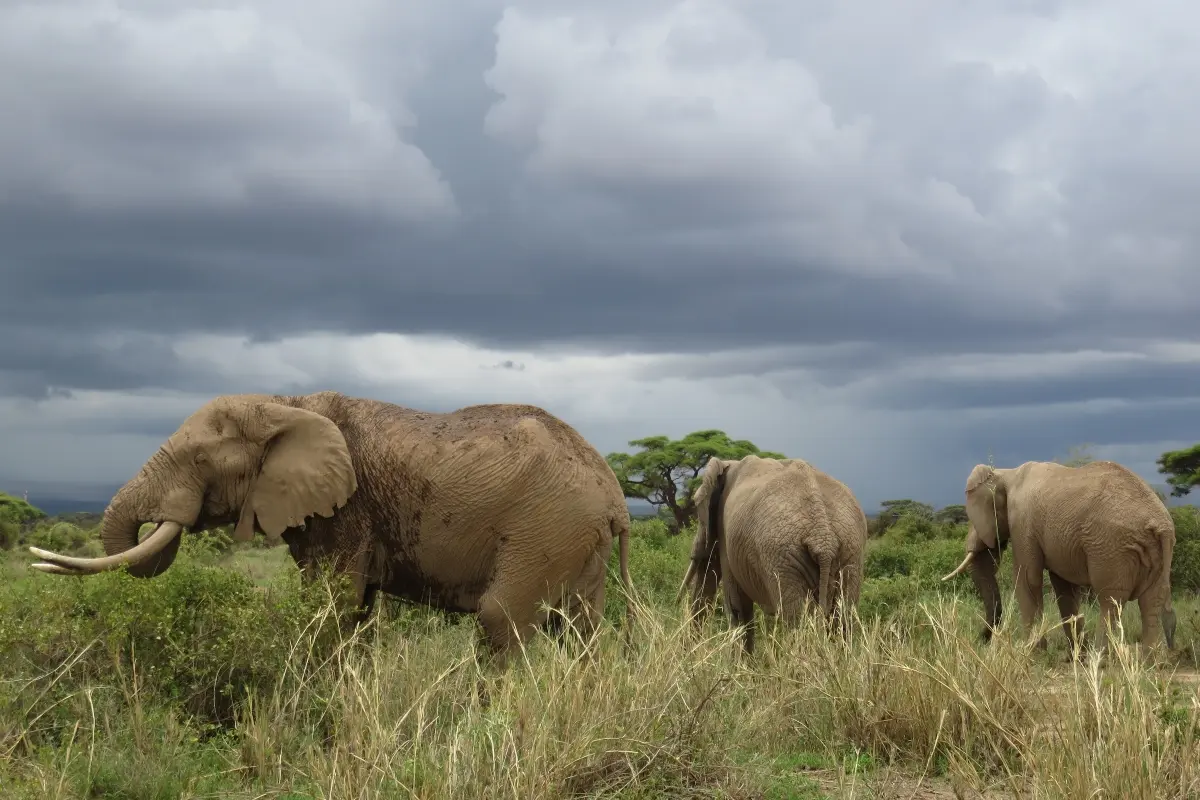
Despite often being overlooked, Kenya’s rainy seasons hold a unique charm. These seasons are characterized by stormy skies and vibrant green landscapes.
But if you’re an enthusiast for lush landscapes and don’t mind a bit of rain, this might be the adventure you’re looking for.
The long rainy season between March to May transforms landscapes into lush greenery providing picturesque backdrops for safari adventures. This is also the time when many animals like the topi, impalas and giraffes calves so there are several newborn animals around.
With long rains come quieter safari experiences that see fewer visitors milling around, fewer safari vehicles on the plains, and lower prices. This makes it an attractive option for those looking for greater exclusivity as well as budget-conscious travellers.
A short rainy season may be experienced in late October and November. With these short rains, you’re likely to experience thunderstorms, short afternoon showers and clear skies thereafter.
Despite these occasional showers, November is great for catching the last of the wildebeest river crossings as migratory herds head back to the Serengeti.
It’s worth noting that the rainy seasons rejuvenate the parks’ water sources meaning the animals don’t have to travel far or converge at specific permanent spots for a drink. This may make game viewing more challenging and the muddy conditions may render some sections of the parks inaccessible.
Further, some camps close during the long rains so you’ll want to check with your tour operator about which accommodations are open at this time.
Wildebeest Migration Season

Also known as the Great Wildebeest Migration, is one of nature’s most spectacular events and takes place in Kenya between late June and October. This is also Kenya’s peak season and attracts a lot of visitors from the world over.
This remarkable natural phenomenon sees over a million wildebeest, zebra, and gazelle traverse the vast plains of the Serengeti in Tanzania to the lush grasslands of the Masai Mara in Kenya in search of food and water
The optimal time to witness this spectacle is from late July to September. It coincides with the daring Mara River crossing—one of the most dramatic events in the migration cycle.
Safari-goers see first-hand as herds of wildebeest bravely navigate the often murky and fast-moving crocodile-infested waters. Confusion, drama, valour, determination, death, and triumph are all wrapped into one experience.
Survivors spread out into the Masai Mara feasting on delectable grass shoots. By November the herds head back to Serengeti in time for the calving season.
You can follow the herds into Tanzania where game viewing action continues. The herds gather on the plains to give birth to their young, attracting predators such as lions, cheetahs, and hyenas.
It’s a whole other experience watching newborn animals trying to find their place in the world, even as hungry predators pursue them.
Bird Watching Season
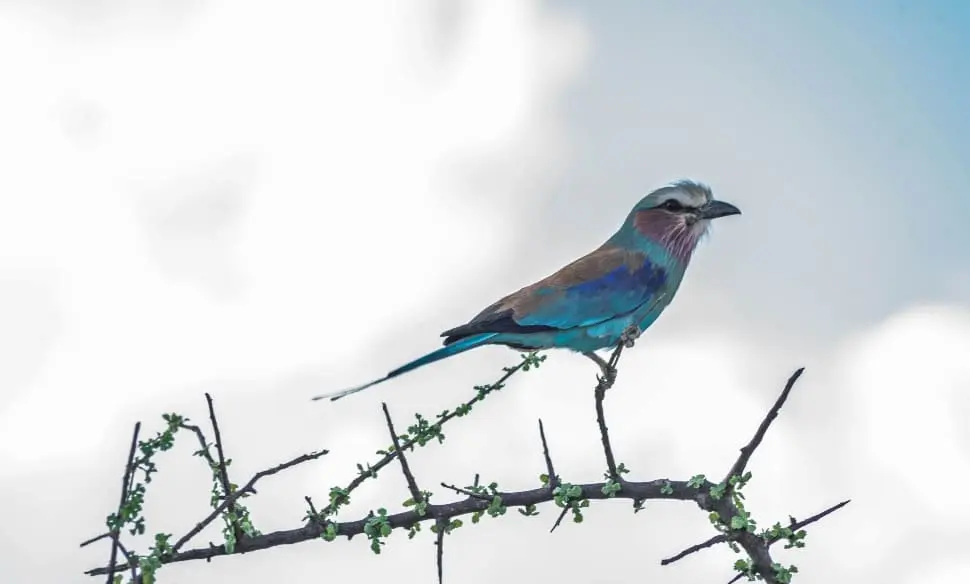
Kenya is a paradise for birdwatchers, with over 1,000 bird species recorded within its borders. While birdwatching is a year-round phenomenon,
can be enjoyed year-round in Kenya, the long and short rains season from November to May is particularly rewarding, as migratory birds arrive from Europe and Asia to breed and raise their young.
Among the kaleidoscope of butterflies and blossoming wildflowers, migratory bird species pass through the parks. You’re likely to spot the Eurasian Rollers, European Bee Eaters, European Swallows, Hobby Falcons, Carmine, and Eurasian Marsh Harriers.
Wetlands such as Lake Naivasha, Lake Nakuru, and the Masai Mara are excellent birdwatching destinations during this time.
National Parks and Game Reserves: Where and When to Go
Kenya’s wildlife riches extend beyond the famous Masai Mara. From the shadow of Mount Kenya to the depths of the Great Rift Valley, the country’s national parks and reserves offer diverse wilderness experiences.
A few of these remarkable destinations include the Amboseli, Lake Nakuru National Park, and Samburu National Reserve.
Amboseli National Park
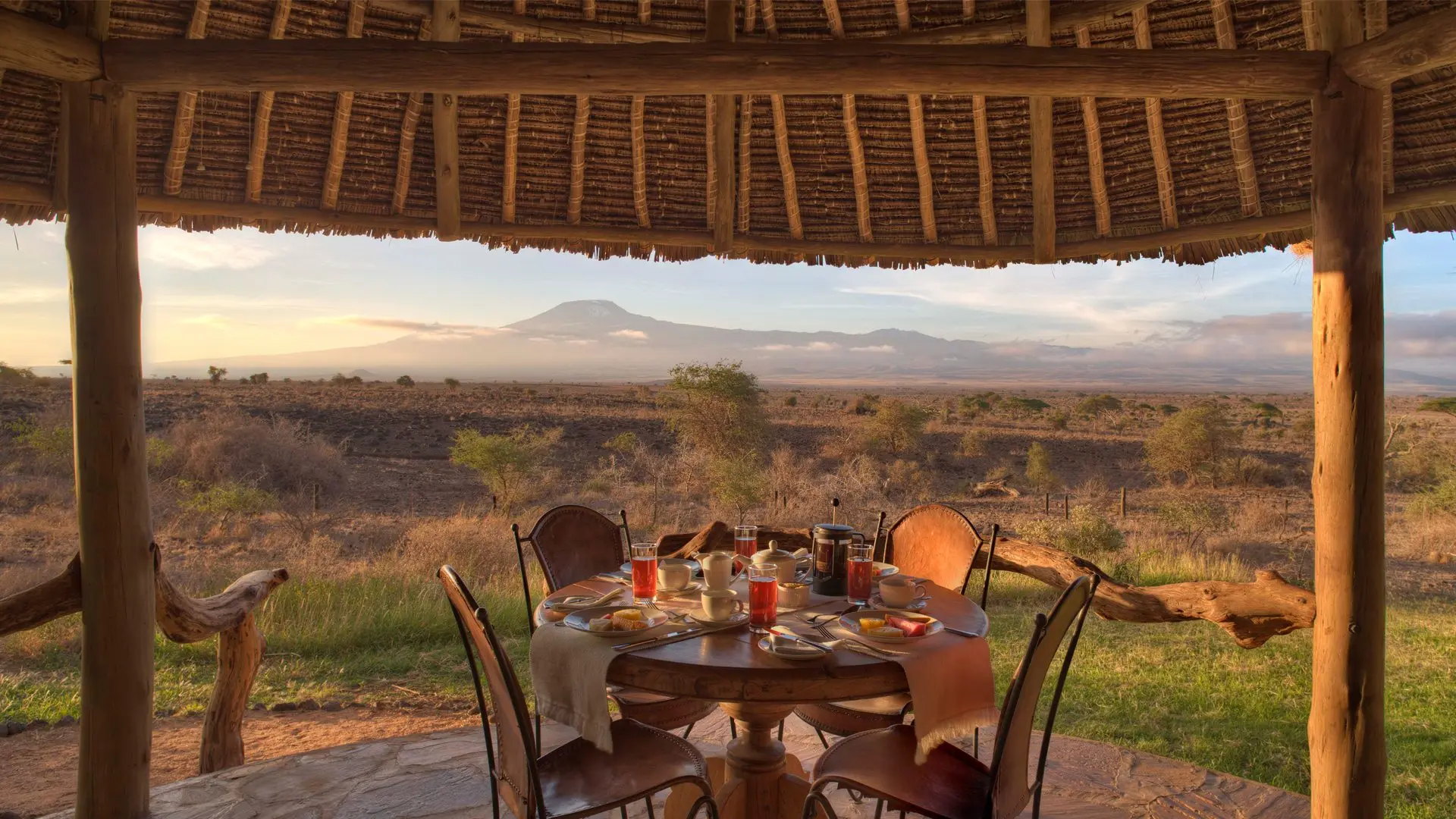
Noted for its stunning vistas of Mount Kilimanjaro and large herds of elephants, Amboseli National Park is a must-visit on any Kenyan safari itinerary.
The dry season offers exceptional wildlife viewing opportunities and breathtaking panoramas of Africa’s highest peak.
Apart from its elephant population, the park is home to a variety of other wildlife and bird species, and the clear skies during the dry season provide perfect conditions for wildlife photography.
The wet seasons provide much-needed sustenance for the flora and fauna and fill up the shallow Lake Amboseli where many wading birds hang out. You’re also likely to see many newborns teetering next to their moms.
Lake Nakuru National Park
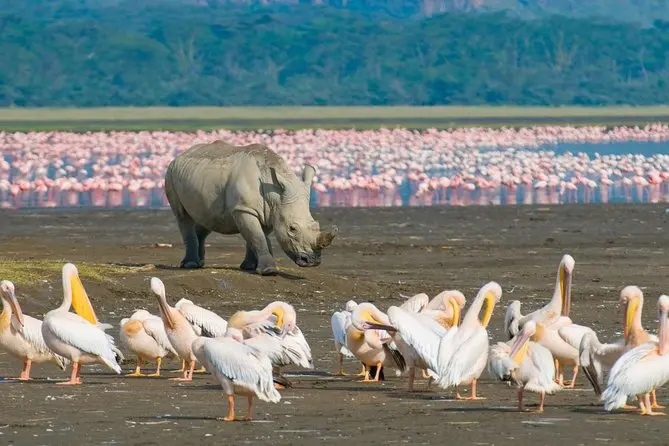
Located in the Great Rift Valley, Lake Nakuru National Park offers a unique wildlife spectacle. Known for its flamingos that colour the lake’s shores pink and as a sanctuary for both black and white rhinos, the park is a paradise for wildlife lovers.
The best time to visit Lake Nakuru National Park is during the dry season. However, the park enjoys dry semi-humid weather meaning it is favourable all year.
You can pop in, in January, May, July, August, or December. A light jacket can come in handy in the evenings or early mornings.
Unlike other parks, game viewing is possible all through since the park is fenced and the animals don’t venture outside of its confines. Plus the road network is really good ensuring you can navigate the park even in the long rains.
Samburu National Reserve
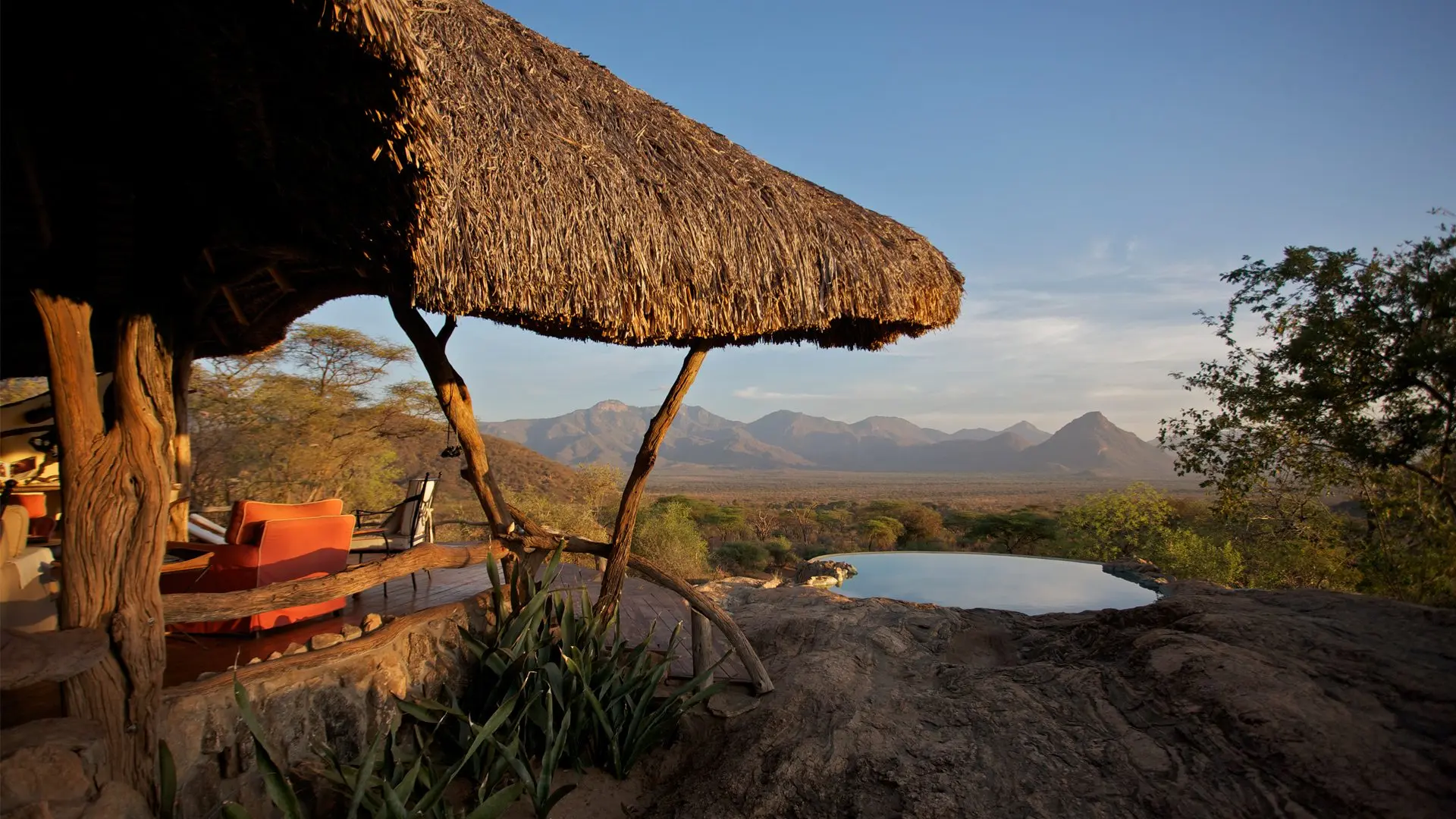
Situated on the banks of the Ewaso Ng’iro River, Samburu National Reserve offers a unique wildlife experience. You’re likely to spot an incredible array of wildlife including unique species like the Grevy’s zebra, reticulated giraffe, Somali Ostrich, and the long-necked gerenuk.
June to early October and January to March, are the best times to visit the park as animals gather around the river, providing excellent game-viewing opportunities.
The good news is that Samburu doesn’t experience intense rainy periods which makes it a year-round destination. However, the grass grows quite high in the rainy season which may make animal spotting challenging.
Incorporating Beach Holidays in Your Safari

The coastal areas of Kenya offer a unique blend of natural beauty, and recreational activities that appeal to travellers of all ages and interests.
Kenya’s coastline stretches for approximately 536 kilometres (333 miles) along the Indian Ocean, boasting some of the most beautiful beaches in the world.
With powdery white sands, crystal-clear turquoise waters, and swaying palm trees, the beaches of Diani, Watamu, Malindi, and Lamu are renowned for their natural beauty and tranquil ambience.
Our coastal waters are teeming with marine life, making them ideal for snorkelling, scuba diving, and other water-based activities. The coral reefs off the coast of Watamu and Malindi are part of the Malindi-Watamu Marine National Park and Reserve, home to a diverse array of fish, sea turtles, dolphins, and other marine species.
From swimming and sunbathing to windsurfing, kiteboarding, and deep-sea fishing in the Indian Ocean, you can enjoy a wide range of water sports and recreational activities.
The coastal cuisine of Kenya is a highlight for food lovers. Fresh seafood dishes, including grilled fish, prawns, and lobster, accompanied by coconut-infused rice, chapati bread, and flavorful sauces are worth sampling.
Responsible Travel in Kenya: Supporting Conservation Efforts
Responsible travel involves not only enjoying your vacation but also contributing positively to the places you visit.
In Kenya, this may take the form of supporting conservation efforts (e.g. visiting elephant and rhino sanctuaries), engaging with local communities, and choosing eco-friendly accommodations
Kenya has made significant strides in the conservation of wild animals, resulting in the recovery of iconic species such as elephants, rhinos, and lions. Every little effort counts towards preserving the beauty of Kenya for future generations.
Summary
From witnessing the Great Wildebeest Migration to relaxing on pristine beaches, birdwatching, and supporting conservation efforts, a Kenyan safari offers a plethora of unforgettable experiences. So, what is the best time to visit Kenya? We believe we have answered this question.
Kenya’s wilderness experiences are bound to leave lasting memories that spark your very soul. Contact us today to book your adventure into the wild lands of Africa.
Frequently Asked Questions
What Is the Best Month To Go on a Safari in Kenya?
The best time to go on a safari in Kenya is between June and October. Travelling in early September increases the likelihood of witnessing the great migration by wildebeest and other herbivores across the Masai Mara.
What Is the Best Month To Go to Kenya?
Ideally, visiting Kenya in the months running through the second half of the year makes for better safari experiences. The months in the first half are marked by long rains which may appeal to nature enthusiasts and those looking for an exclusive experience.
Which Is the Best Month To Visit Masai Mara?
The best month to visit Masai Mara is during the long cool-dry season from July to October, as the absence of rain makes it easier to observe animals and insect levels are lower during this time.
What Time of Year Is Best for Safari in Kenya?
The second half of the year is the best time to visit Kenya. This season is marked by a temperate climate, great visibility, and greater game-viewing opportunities.
What Wildlife Can I Expect To See in Kenya?
In Kenya, you can expect to see a diverse range of wild animals, including the ‘big five’, cheetahs, giraffes, zebra, hippos, Nile crocodiles, and numerous bird species.
